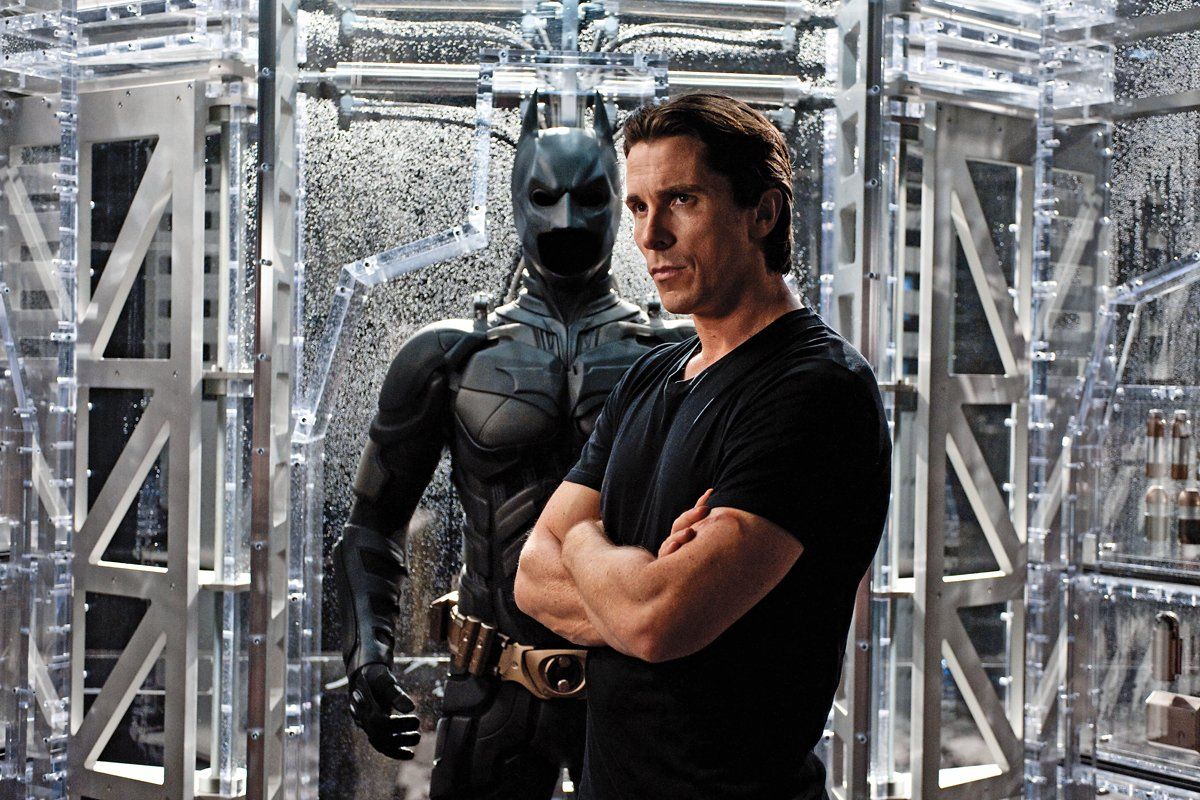
If every generation gets the superhero it deserves, what does it say about us that the latest iteration of the Dark Knight is a conflicted billionaire in a tuxedo pursuing an ex-pensive crime-fighting hobby?
Four years after his last outing, Christian Bale returns to his bat suit in The Dark Knight Rises (in theaters July 20), the final installment of director Christopher Nolan's trilogy. The buzz around the highly guarded film is that Nolan has shifted his political messages (which are, to his credit, never black or white, red or blue). Just as he demonstrated that caped vigilantes could still be relevant post-9/11—that they could not only echo a changed world but reveal something new about it—he's now reflecting the fractured culture of our new decade back at us.
Batman's new nemesis, Bane (Tom Hardy), is literally a mass of muscle, a one-man mob, but his real threat is that he's the charismatic leader of a collective. He leads a crowd; he inspires and commands followers. By contrast, Batman/Bruce Wayne starts to look like a privileged 1 percenter, a bourgeois capitalist facing an angry city. There's a storm coming, Selina Kyle warns him, "and when it hits, you're all gonna wonder how you could live so large and leave so little for the rest of us."
And so Batman himself will have to change, to attune himself to the new mood and new language of the city and its crowds, if he's going to survive. Sound familiar? It was perhaps easier terrain for Nolan to navigate when real-world concerns began to overlap with the film. News broke that Nolan was shooting footage around the Occupy Wall Street protests last year, and in November 2011 Occupy protesters shone a Bat signal at a New York skyscraper, replacing the familiar insignia with "99%" and consciousness-raising slogans.
In the run-up to its release, The Dark Knight Rises incorporated two new forms of communication into its viral campaign: the language of the Occupy street chant, led by the repeated phrase "mic check," and the hashtags and tweets that spread like wildfire through a series of street protests, from the Arab Spring to the London riots of 2011. Fans of the new film were invited to lend their own voices to a mob chant for the soundtrack, then encouraged to tweet images of Bat-graffiti from around the world. Nolan was harnessing the power and energy of the contemporary "hivemind," the collective intelligence of online fans, and The Dark Knight Rises shows that this crowd power can be both liberating and dangerous.
Batman's specialty has always been his ability to stay current by changing with the times. When he first appeared in 1939, his stories mixed Warner Brothers gangster-movie grit with the European Gothic of German expressionism. In 1943, the first Batman film serial gave the Dark Knight's detection an unpleasant, and thankfully brief, anti-Japanese propaganda tone. Then it was Batman's turn to become mainstream America's enemy in 1954, as the character and his sidekick Robin were examined at a Senate sub-committee hearing, accused of encouraging homosexuality among young boys. In the late 1960s, Batman went pop, both on Adam West's high-camp TV show and on Andy Warhol canvases. But the 1970s, '80s, and '90s turned his palette dark again, taking him down to the shadowy street level through graphic novels like Frank Miller's The Dark Knight Returns. By the end of the century, it seemed as if Batman, thanks to the animated series and his role alongside Superman, Flash, and Green Lantern, was shifting back toward the light.
That didn't last long. The world really did change, in the space of a few seconds, on Sept. 11, 2001, and for a while superheroes almost seemed redundant, pointless, even tasteless. How could we watch costumed characters swinging around skyscrapers and knocking down city blocks when real-life horror had hit New York?
Somehow Nolan managed to do it with a deft touch. His Gotham City is New York or Chicago shifted a little into comic-book territory, but still recognizable and real. Gotham takes the good and the bad of our major cities, digs into our hopes and worries, and throws them up on a big screen. And, sometimes, the figure projected from our shared cultural concerns is a mob (Bane's army) or a monster (Joker).
In 2008's The Dark Knight, Joker, played by Heath Ledger, was a terrorist, and the key question became: how far can we go to fight terror with terror? Are we justified in taking the gloves off—as Batman does when he has Joker locked in an interview room—and beating a suspect in a ticking-bomb scenario, brutalizing one person to potentially save the lives of others?
Nolan has always made us find our own answers, and the ambiguity could be what made the trilogy such a success. With the presumed end of his Dark Knight, we'll have to turn back to films that rely more on CGI spectacle than introspection. His Batman is a complex hero—walking the border between law and order, terror and counterterror, the people and the privileged. That's why we keep coming back to his stories, to tell us something about our world and all its dilemmas. He's no clean-cut Superman, but he's the hero—and sometimes anti-hero—America needs.
Uncommon Knowledge
Newsweek is committed to challenging conventional wisdom and finding connections in the search for common ground.
Newsweek is committed to challenging conventional wisdom and finding connections in the search for common ground.
About the writer
To read how Newsweek uses AI as a newsroom tool, Click here.








